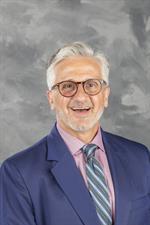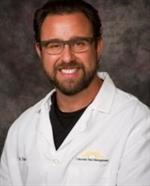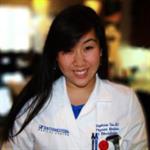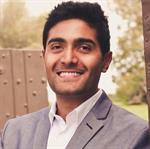In celebration of the 30th anniversary of AAPM&R's Resident Physician Council (now the Physiatrist In-Training Council), your Academy caught up with some past RPC/PHiT Presidents to learn about their experiences serving the Academy. Here are their stories.
Michael B. Furman, MD (1993-1994)

I attended an Academy meeting as a medical student and was fortunate to attend an RPC event.Through the years, I eventually became vice- chair and eventually RPC chair. We had many RPC accomplishments, which were monumental and trivial but they contributed to where we are today.
Some of these are:
- RPC developed a membership information packet which we developed and sent to PGYI and PGYII residents in an attempt to increase Academy membership.
- We started Regional Meetings for RPC members.
- We encouraged electronic communication using America On Line (AOL) and the Academy subsidized this “new” technology
- We started holding Welcome Gathering for the residents at the Assembly
- At that time, there were only two sites for the written examination (Rochester and Philadelphia.) The RPC asked the Academy to make a recommendation to the ABPM&R to include a site on the west coast in administering the written portion of the Board examinations.
- The RPC also requested that the Academy contact the ABPM&R requesting their exploring moving the oral examinations to a location other than Rochester, Minnesota and then possibly expand to include regional sites.
- As RPC chair, I sat on the Board of Governors (BOG) and was included in the annual BOG photo.
In addition to above, the non-tangable aspects of the RPC included the long-term relationships with friends and colleagues from the RPC.
David P. Russo, DO (2004-2005)

Q: As a past president of the Resident Physician Council Board, what do you recall most about the experience?
A: I recall being introduced and working with leaders in the field. I also recall meeting and interacting with other residents from around the country who I stayed in close touch with ever since.
Q: What were the challenges you faced and what did your Board focus on during your presidency?
A: Our RPC was focused o two issues: Raising awareness of the specialty among medical students and advocating for a uniform match for PM&R fellowships. We received excellent support from Academy leadership in developing a medical student program that could be brought to Annual Assemblies in various host cities. RPC members and Academy would liaison with student affairs offices as medical schools and promote educational and information events for medical students. Developing a uniform fellowship match proved to be more contentious. Still, our work started an important conversation that did lead to reforms in the process.
Q: What do you think is the biggest benefit for members to participate in the Resident council?
A: Building collegial relationships and learning about how other residency programs innovating and training their residents.
Q: How did your leadership position within the Resident Council benefit your career?
A: It taught me patience. It helped me learn how to build consensus and cultivate trust among groups of people with differing ideas on a matter. Change is scary for most people and its often hard to get stakeholders to move past narrow agendas and competing commitments to make durable change. I learned to except how give-and-take can be used to create value for people on opposite sides of an issue.
Q: Any other insights or specific stories you want to share about the experience?
A: My training program was very supportive of my involvement in Academy work and resident leadership development in general. I encourage program directors and department chairs to cultivate and groom their residents for leadership activities. Working within the Academy’s structure can be a good way to do this.
Ai Mukai, MD (2006-2007)

Q: As a past president of the Resident Physician Council Board, what do you recall most about the experience?
A: How well I was treated by the Academy staff and the Board of Governors. How I was made to feel like my opinion/input mattered, even though I was still a resident.
Q: What were the challenges you faced and what did your Board focus on during your presidency?
How to make sure as many resident physicians as possible felt engaged and connected to our Academy and foster a lifelong loyalty and relationship with our Academy.
Q: What do you think is the biggest benefit for members to participate in the Resident council?
Opportunity to meet residents from all over the country, learn about leadership and volunteerism within the Academy, and network with other Physiatrist leaders.
Q: How did your leadership position within the Resident Council benefit your career?
It taught me to think outside of the little box of my reality. Let me see the "big picture" view of our specialty and think of role that I am playing to contribute to it's advancement. It taught me how to plan and run a meeting. Strategic planning process is applicable to any organization regardless of size. Learning about mission, vision, thinking 5 years ahead, 10 years ahead, etc.
Q: Any other insights or specific stories you want to share about the experience?
I still value the relationships I built during my time on the RPC board and have gained lifelong friends from my experience. I would encourage all residents to attend an Annual Assembly, feel the energy of thousands of Physiatrists in one place, and understand what it means to take pride in and support ones specialty Academy.
Stephanie Tow, MD (2015-2016)

Q: As a past president of the Resident Physician Council Board, what do you recall most about the experience?
A: I recall all of the amazing, passionate, and innovative discussions we had at our annual RPC Board meetings in January, discussing the future of the specialty and ideas to further advance our specialty, while optimizing resources and opportunities for physiatrists-in-training in order to help them with their careers and in turn, make our specialty stronger. I particularly recall the amazing team and creative efforts toward our collaborative "What is PM&R?" video, showcasing all the different faces of PM&R across the country.
Q: What were the challenges you faced and what did your Board focus on during your presidency?
A: Some of the challenges we faced involved ideas that had little evidence, and so we had to dig further to collect evidence. For instance, when proposing multiple white paper ideas, such as the eBook library for AAPM&R members, we had to figure out what resources residency/fellowship programs currently provide their trainees, which members would likely find benefit of such a resource, and the cost/practicality of pursuing such a project, as well as if this was possible to do with the various publishers. Also wished we had more in-person meetings during the year (although know this is not practical) as I found our in-person meetings were much more productive compared to having to communicate with board members remotely in order to get things done.
Our Board focused on kicking off the PM&R Bold initiative, reflecting and revamping various resources for trainees, including AAPM&R Annual Assembly experiences and resources (early career prep sessions, revamping the Chief Resident session format, proposing particular Annual Assembly sessions), and proposing ideas for resources that would be helpful for our members, such as the eBook library, leadership training opportunities for trainees, and website resources to help build materials for patient care (e.g. educational materials or therapy guidelines for different diagnoses), which would also build awareness of the specialty. We also further advanced the roles of the PGY-2 Ambassadors in the Ambassador program to get them even more involved in AAPM&R efforts and help us gather information and further efforts we were working on. We also recognized that we needed to better understand the needs of those in fellowship and early on in their career, and were able to successfully propose modifying the RPC Board --> PhiT Board to include trainees in fellowship as a voice at the table.
Q: What do you think is the biggest benefit for members to participate in the Resident council?
A: 100% the lifelong relationships you build with colleagues and friends you make through your active involvements with the AAPM&R! I have made very useful and valuable relationships with other residents/fellows across the nation during my time on the Board. In addition, I also got to know and work closely with many well-respected physiatrists on the Board of Governors and through the committees with which I've been involved. Through my work with them, I was able to provide useful insight and gain respect from these physiatrists, who I continue to see at conferences and help me with my career path, either via mentoring, thinking of me when they find resources that would be good for my career, or helping me network.
Q: How did your leadership position within the Resident Council benefit your career?
A: I have built so many strong relationships with other trainees and well-respected physiatrists. This has helped me advance my career and keep me up-to-date with a plethora of resources and networking opportunities relevant to my career interests. I learn so much from my colleagues with whom I work that I otherwise would not get if I were not involved at the national level. Many of the well-respected physiatrists with whom I've worked have helped me connect to other physiatrists who have gotten me involved with other efforts with the specialty, helping me find fellowships that would be a good fit for me, and hopefully help connect me with excellent job opportunities in the future. I have also built a strong relationship with AAPM&R staff. I really feel my voice is often listened to and valued and feedback is taken seriously. Through continued engagement with the AAPM&R through my roles, I have been able to help shape the future of the specialty and also the direction the AAPM&R takes to support its members and how it does this. I have a particular interest in Healthcare Administration in the future of my career as well, and my work with the AAPM&R has given me significant experiences and skills to prepare for this.
Q: Any other insights or specific stories you want to share about the experience?
A: I have had so much fun every year during my involvements with the RPC/PhiT Board and really value the relationships I've built with other leaders in the specialty, perhaps even more so than with the relationships I've built with co-residents during my residency training. My involvements with the AAPM&R have been some of my favorite experiences during my career and I hope to continue my close involvements throughout my career!
G. Sunny Sharma, MD (2016-2017)

Q: As a past president of the Resident Physician Council Board, what do you recall most about the experience?
A: What I recall most from being President of the PHiT Council are the lasting relationships I developed with my co-residents, AAPM&R staff, board members, and council members. I was always in awe during meetings to be in the presence of physiatrists who care so deeply about our field and the patients we treat. It was inspiring to discuss how physiatry is making an impact on the healthcare landscape today and has the potential to shape the way we treat patients in the future.
Q: What were the challenges you faced and what did your Board focus on during your presidency?
A: Some of the challenges we faced during my time on the board stemmed from the realization that even within the field of physiatry, there are multiple gears turning in different directions that must be balanced. This knowledge allowed us to take into consideration how the projects we focused on and ideas we recommended would not only impact residents, but physiatrists in general. One key group we tried to emphasize was early career physiatrists who were a few years out from graduation. Our goal was to try to anticipate their needs and build a platform that would help them transition into the workforce. This resulted in our official name change from the Resident Physician Council (RPC) to the Physiatrist in Training (PHiT) Council, allowing for the incorporation of fellows on the resident board. We were also able to help develop and provide input on the new early career physiatrist membership model, which has some truly amazing benefits and resources.
Q: What do you think is the biggest benefit for members to participate in the Resident council?
A: I truly feel there are numerous benefits to participating in the resident council. It’s wonderful to meet residents from other programs and learn about their curriculum and learning methods. I think that collaboration will help raise everyone’s program to a new level. It’s a humbling experience to have the opportunity to interact with leaders within our field and to see how they’ve shaped the way we learn in residency. The resident council allow physiatrists to develop a sense of unity and support for one another, which will make our specialty stronger as a whole!
Q: How did your leadership position within the Resident Council benefit your career?
A: It was an honor to serve on the resident council as a member of the medical education committee and then as president of the board. It allowed me to develop and strengthen my leadership and communication skills. It was rewarding leading the medical student panel at the annual assembly and seeing how much the interest in our field has grown since I applied only a few years ago. I’ve had the opportunity to create strong relationships with so many people including AAPM&R staff, leaders within our field, and residents from different programs.
Q: Any other insights or specific stories you want to share about the experience?
A: It can be easy to become involved with and make an impact on the field of physiatry simply by raising your hand and showing interest. The personalities within our field are so welcoming, supportive, and cheerful. Together we can build a stronger academy and a stronger specialty. It’s been an amazing experience serving on the resident board and supporting our specialty and I hope to continue being involved for many years to come. I hope you will join me!